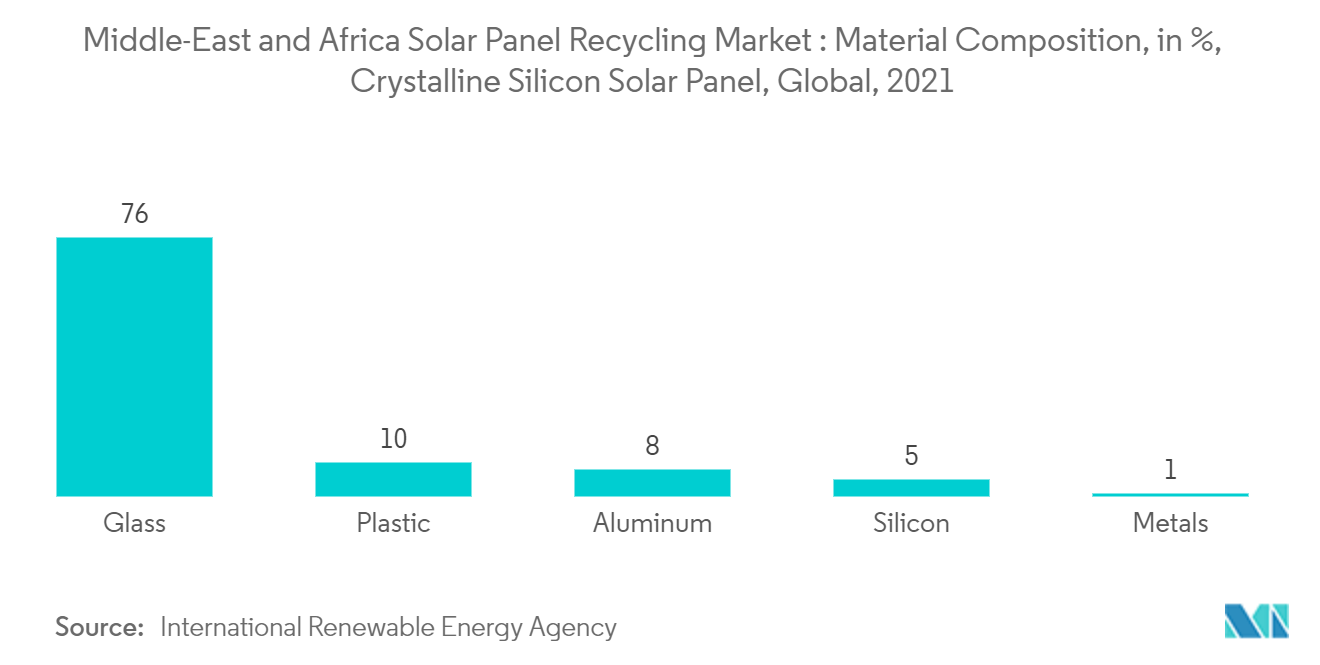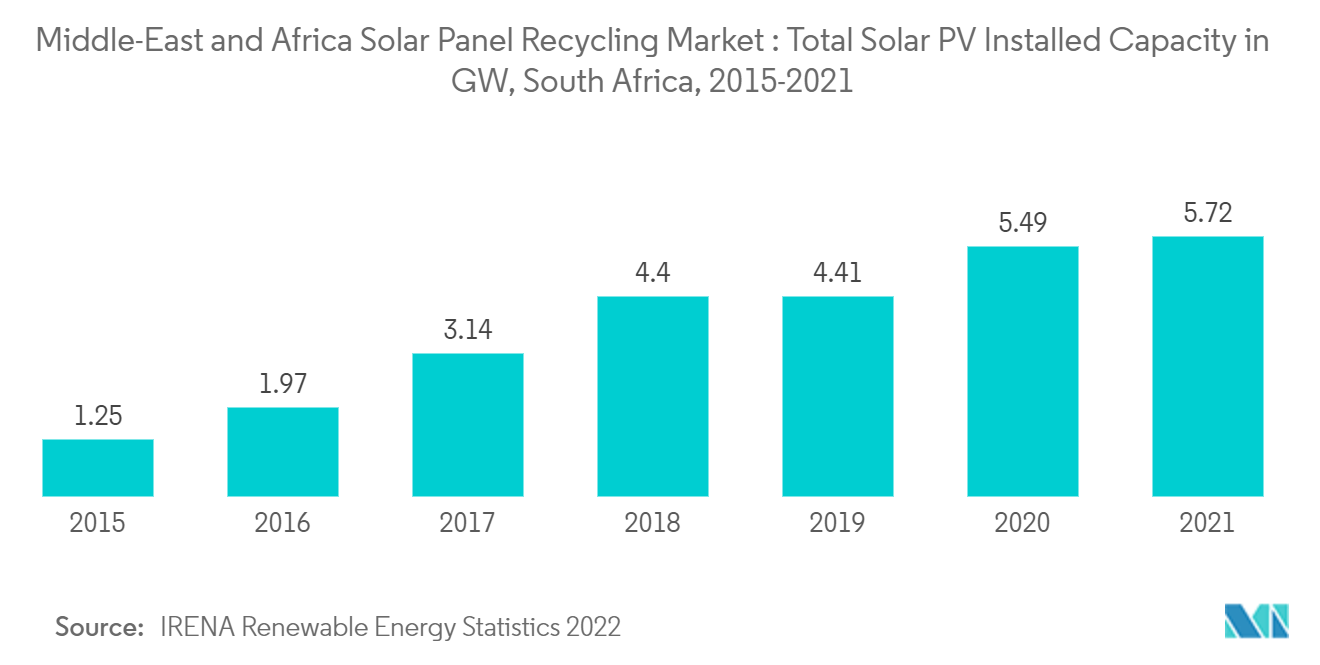Market Trends of Middle East and Africa Solar Panel Recycling Industry
This section covers the major market trends shaping the MEA Solar Panel Recycling Market according to our research experts:
Crystalline Silicon (c-Si) Type to Witness Significant Growth
- Crystalline silicon solar panels dominate the market and hold a majority of the market share in the Middle East and African regions. But due to low-efficiency ratios, the c-Si products have been discontinued in recent years, which has significantly increased the c-Si solar panel recycling market.
- The c-Si technology consists of thin slices of solar-grade silicon, also known as wafers, made into cells, assembled into panels, and connected electrically. The solar panels are made of 76% glass, 10% plastic, 8% aluminum, 5% silicon, and 1% metals. The recycling process yields about 96% of the materials to be reused for producing new solar panels.
- Through the purely mechanical process, the recovery from crystalline silicon is around 85% by panel mass. However, without a combination of the thermal, mechanical, and chemical process, the level of impurities is high enough to reduce the resale value, thereby making it necessary to use a combination of methods instead of just a single method.
- The first step of the process is disassembling the aluminum and glass parts, from which around 95% of the glass and 100% of the metals can be reused. The remaining materials, like plastics and cell modules, are treated thermally at 500 °C in a thermal processing unit to ease the binding between the cell elements.
- The recycling of glass recovered from a solar panel is relatively low cost and involves minimal additional investments for flat-glass recycling companies. Also, by 2030, the weight of glass in a solar panel is expected to rise by 4%, making it around 80%, reducing the cost of new solar panels and increasing the recovery efficiency of old solar panels.
- Therefore, based on the above factors, the crystalline silicon type is expected to witness significant demand in the Middle East and African solar panel recycling market during the forecast period.

South Africa to Witness Significant Demand
- South Africa is one of the largest solar PV markets in the region. With an installed PV capacity of around 5.7 GW, the country, as of 2021, is the largest market in terms of operational solar systems. However, the country's solar market experienced stagnation in the past years, primarily due to the postponement of its renewable energy auctions.
- By 2030, the country is expected to add around 8,500 tons of solar panel waste, up from an estimated 450 metric tons in 2021. However, as of 2021, the country has no recycling facilities for solar equipment.
- In 2021, most of the solar waste was emptied into a landfill in the country as recycling solar panels is not economically viable in African countries. Moreover, the country's government is focusing on investing in new solar panel recycling technology. Therefore, the market is expected to witness a moderate growth rate during the forecast period.
- Although, in the short term, the country has not realized significant solar panel waste that can be viably recycled domestically, the future remains bright as the country's energy goals are steered toward more sustainable models than its regional counterparts. The country is expected to emerge as a potential hub for solar waste recycling in the near future.
- Therefore, based on the above factors, South Africa is expected to witness significant growth in the Middle East and African solar panel recycling market during the forecast period.


